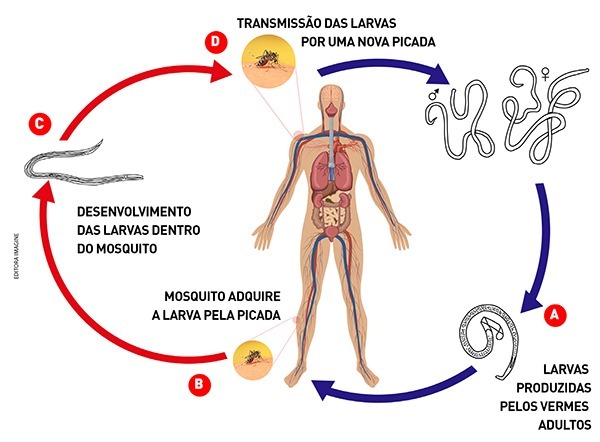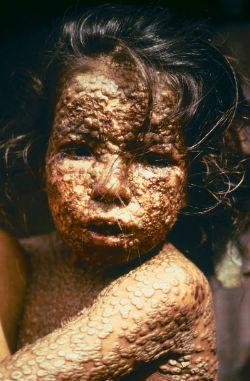THE filariasis is a parasitic disease caused by worms and transmitted through insect bites. She is also known for lymphatic filariasis or elephantiasis.
It is recognized as a tropical disease, that is, typical of the tropical and subtropical regions of the planet.
In Brazil, the city of Recife has the highest number of sick cases in the country. The disease has also been reported in the states of Amazonas, Alagoas, Bahia, Maranhão, Pará and Santa Catarina.
Filariasis transmission
Filariasis is caused by several species of worms. In Brazil, the main cause of the disease is the nematode Wuchereria bancrofti.
Transmission does not occur from person to person, a vector is needed, which can be a mosquito or fly. The best known vector in Brazil is the Culex quiquefasciatus (stilt or spider worm).
They are also vectors of the disease. chrysomya (bottle fly) and some species of mosquito Anopheles, infected by the worm larvae.
When the female mosquito bites, the larvae penetrate the skin and migrate to the lymph nodes, where they stay until they reach adulthood.
Upon reaching maturity, adult worms already differentiated into males and females will originate microfilariae, which will also inhabit the bloodstream.
The mosquito is contaminated by biting infected people, starting a new cycle of transmission.

Filariasis Symptoms
In some cases, filariasis is asymptomatic, that is, it has no symptoms. When they appear they are:
- Groin swelling;
- Fever;
- Increased size of the affected limb;
- Muscle aches;
- malaise;
- Headache;
- Presence of fat in urine.
Since the worms live in an infected person's lymph vessels, they block and affect circulation. This situation leads to swelling of the limbs, breasts and testicles. In more advanced cases, limb deformation may occur.

This is why the disease is also known as elephantiasis, as the swollen lower limbs resemble an elephant's foot.
Filariasis treatment
When discovered early, filariasis is curable and treatment consists of using medication prescribed by the doctor. The drug destroys most of the microfilariae present in the blood.
In more advanced cases it is not possible to cure the disease. However, treatment is essential to prevent the proliferation of worms and consequent swelling and deformation.
There are still cases where adult worms need to be removed from the body through surgery.
In Brazil, the treatment of filariasis is free and guaranteed through the Unified Health System (SUS). The treatment is long and should not be interrupted.
How to prevent filariasis?
The best way to prevent filariasis is to stop its transmission. Thus, contact with the mosquito that transmits the disease should be avoided, through the use of mosquito nets and repellents, installation of screens on doors and windows of houses and avoid prolonged exposure in areas at risk of Contamination.
The treatment of sick people is also essential to prevent further transmissions, interrupting the disease transmission cycle.
Also read about the Dengue.


